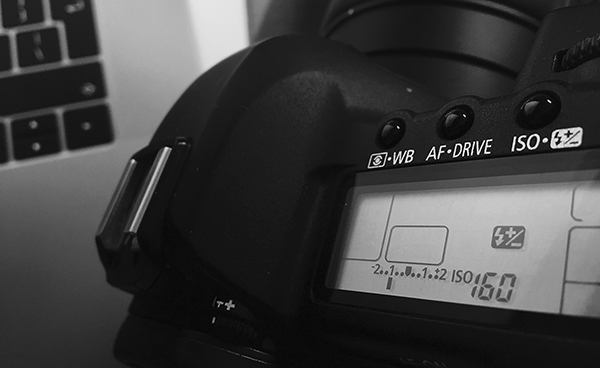What Is Exposure Compensation?
Most, if not all, DSLR and mirrorless cameras offer a way to apply some exposure compensation. This is a manual adjustment to tweak the brightness of the final image before capture. This setting can be adjusted through the settings menus or via a dedicated dial or a multi-purpose dial.
In the photo below, you can see from the dotted, numbered, bar on the camera’s LCD screen, that an exposure compensation of -1 has been selected. This halves the amount of light that will reach the camera’s sensor.

Exposure compensation is great for correcting extreme lighting. When the camera meters (checks how much light is available), it takes an average and uses that to set the right exposure.
But sometimes the average exposure doesn’t make for a great shot:
- A dark scene (e.g. a portrait subject wearing dark clothes, photographed against a dark background) will be overexposed, making the dark clothes too light, and any bright regions of the scene may be burnt out.
- A bright scene (e.g. lots of white snow) will be underexposed, making the snow a dull gray color, and the detail in any very dark areas completely lost.
As camera controls go, exposure compensation is one of the most useful, as it lets you quickly compensate for problems with exposure, without having to change shooting mode, or any other settings.
Here's a lesson from Digital Camera Mastery that will demonstrate this:
Exposure Compensation - the Hidden Feature
